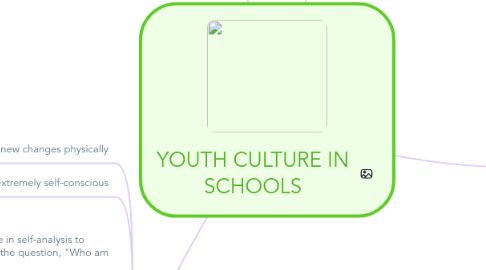YOUTH CULTURE IN SCHOOLS
by Leslie Lobdell


1. High School Students: 9th-12th grades
1.1. More confidence in who they are and the peer group they find themselves.
1.2. Huge interest in the opposite sex
1.3. Desire for more intimate friendships
1.4. Increase in maturity
1.5. Peer groups and cliques are very concrete
1.5.1. Distinction of peers as "good" or "bad"
1.5.1.1. "Good" meaning good grades, no addictions or discipline problems, virgins,
1.5.1.2. "Bad" meaning struggle in school, alcoholics, druggies, promiscuous, major discipline problems
1.5.2. Everyone knows which peer group they and everyone else belongs to
1.6. Desire more independence
2. Middle School Students: 6th-8th grades
2.1. Puberty strikes: new changes physically
2.2. Become extremely self-conscious
2.3. Increase in self-analysis to answer the question, "Who am I?"
2.3.1. Many experiment with a variety of identities
2.3.2. Many try to be someone they are not to fit in with a desired peer group
2.4. Formation of distinct cliques
2.4.1. Athletes
2.4.2. Preps
2.4.3. Band geeks
2.4.4. Punks
2.5. Tend to struggle with pride or feelings of low self-esteem
2.6. Social media and cell phones become central
2.6.1. Lose ability to have meaningful face-to face contact
2.6.2. Gives teens ability to connect with others socially at any given time.
2.7. These teens start distancing themselves from their parents and other adults
2.8. New interest in opposite gender develops
3. Elementary Students: K-2nd grades
3.1. Tend to gravitate toward same-gender relationships
3.2. Friendships are made across racial and economic boundaries
3.3. Introduction of bullying seen
3.3.1. Name calling
3.3.2. Teasing
3.3.3. Class bullies identified
